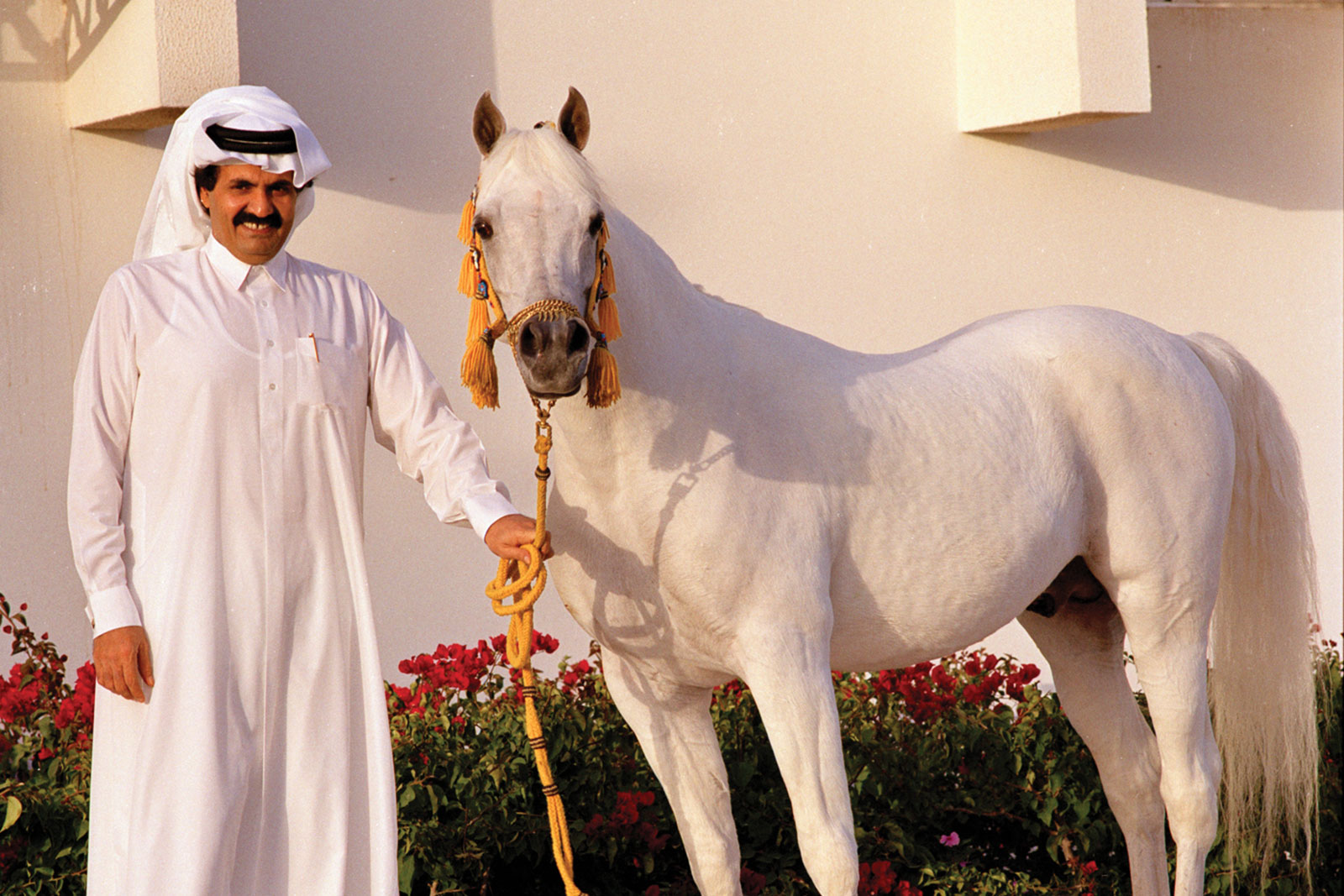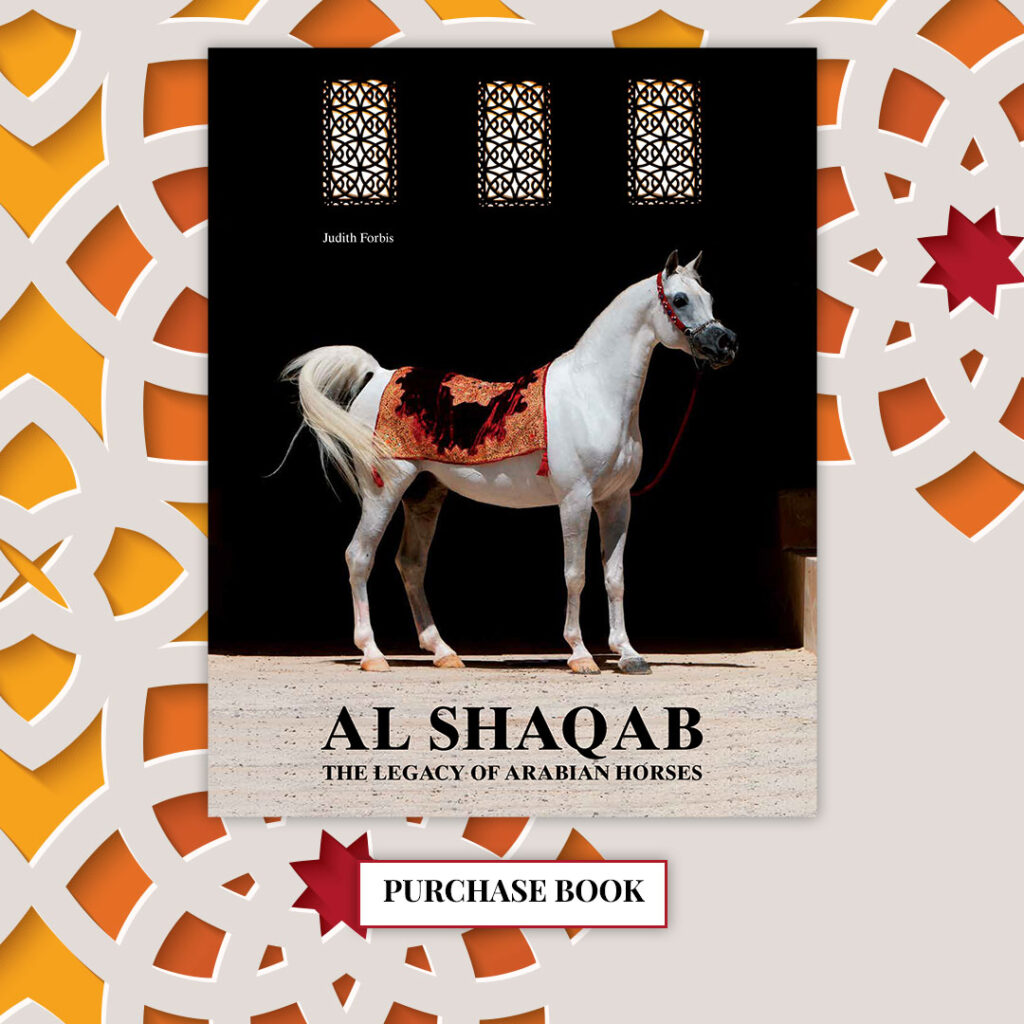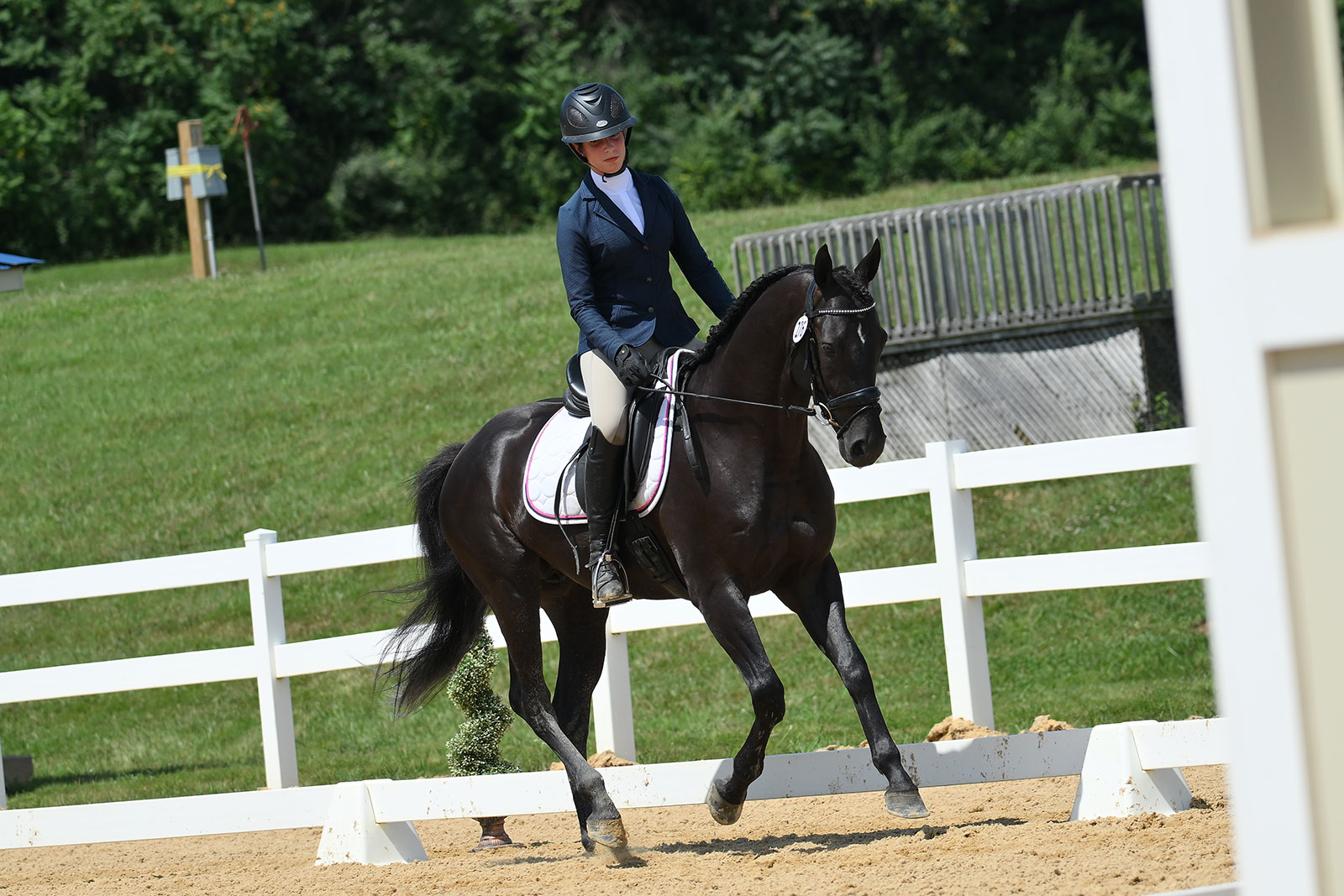Book Review by Judith Wenning
Book by Judith Forbis
As featured in the Summer 2024 issue of Arabian Horse World
The latest book by Judith Forbis is a must-read for all equine enthusiasts. Legendary connoisseur of Arabian horses, breeder, and author for over 60 years, Judith Forbis’ role is unique. She founded Ansata Arabian Stud in 1959 with her late husband, Don, a straight Egyptian Arabian breeding program with vast global influence. Arabian horses from Ansata had a significant impact on innumerable stud farms. One of the most prominent is Al Shaqab Stud in Doha, Qatar. It was founded in 1992 by HH The Father Emir of Qatar, Sheikh Hamad bin Khalifa. Al Thani, Al Shaqab is a household name for high-quality Arabian horses. Always a guarantee for success in the show ring, Al Shaqab is a very successful breeding program with impeccable facilities and a leading equine education resource center. Qatar looks back to a long tradition of prized Arabian horses. This large-formatted book gives insights into the fascinating history, presence, and influence of Al Shaqab horses.

Ansata Majesta (Ansata Halim Shah x JKB Masouda), 1993 Junior Champion mare at the first Qatar show.
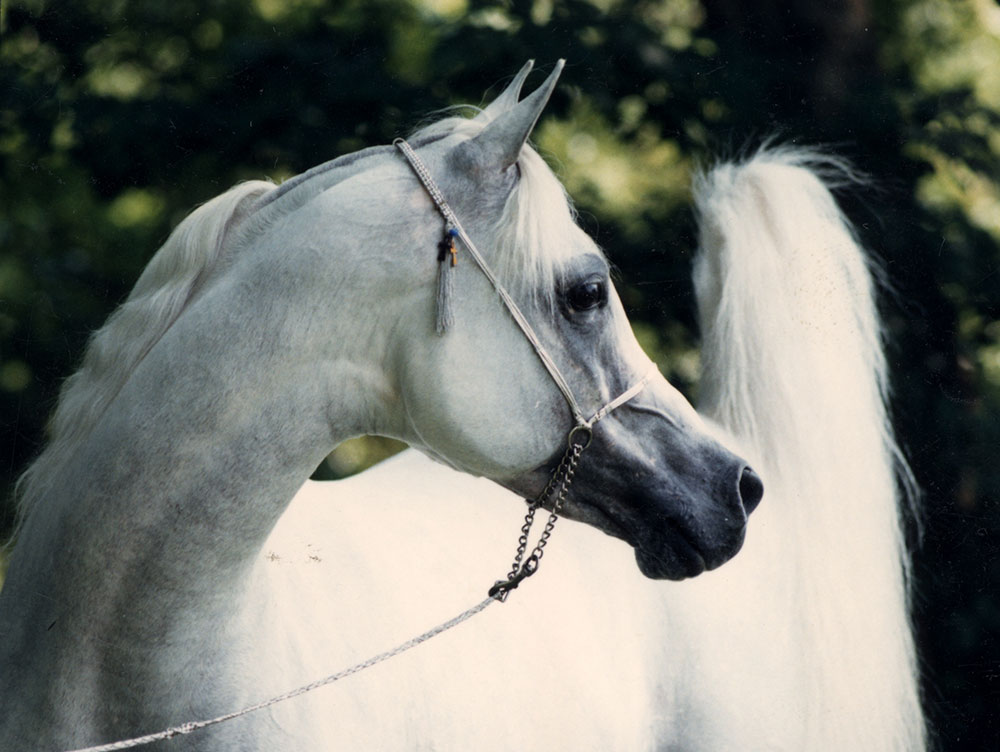
Ansata Halim Shah (Ansata Ibn Halima x Ansata Rosetta), the “fountain photo” by Jerry Sparagowski that was later copied by many of the equine photographers. This photo was taken at Ansata Arabian Stud, Mena, Arkansas before Halim Shah was exported to Qatar.
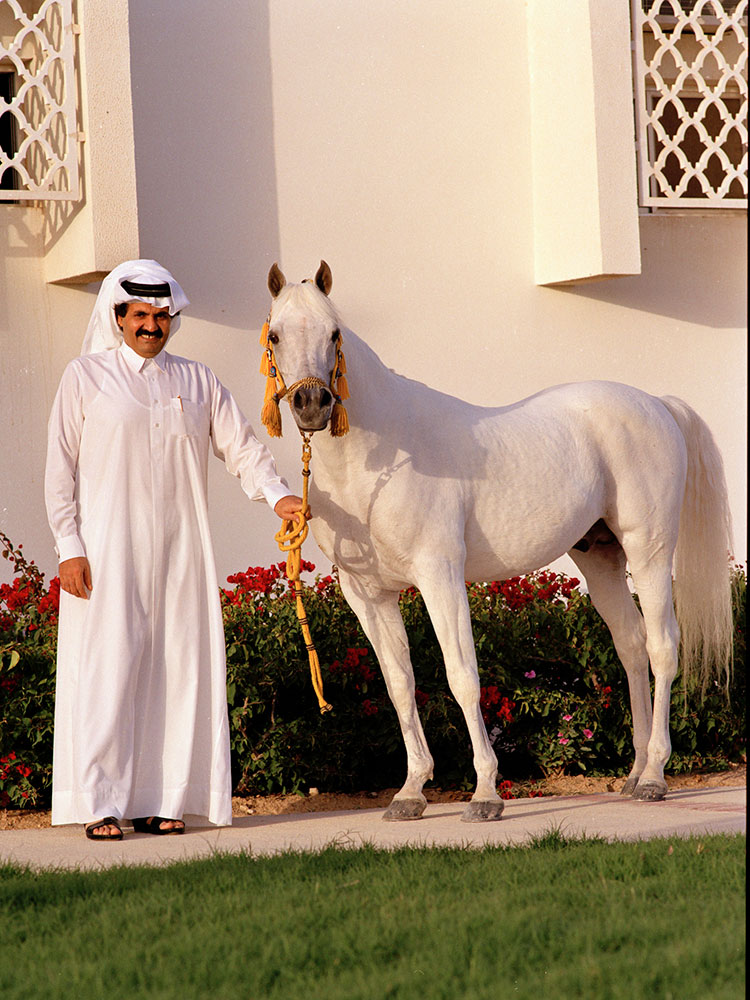
HH The Father Emir, Sheikh Hamad bin Khalifa Al Thani, with Ansata Halim Shah in front of the Al Shaqab stables. The photo taken when he was still Heir Apparent in 1994 prior succeeding his father to become the Emir of the State of Qatar in 1995. Photo: Rik Van Lent Jr.

Imperial Phanilah (Ansata Imperial x Imperial Phanadah) Salon du Cheval World Champion Senior Champion Mare 1994 – the first of Al Shaqab’s World Champions. Photo: Rik Van Lent Jr.

Al Adeed Al Shaqab in the desert. Photo: Gigi Grasso.
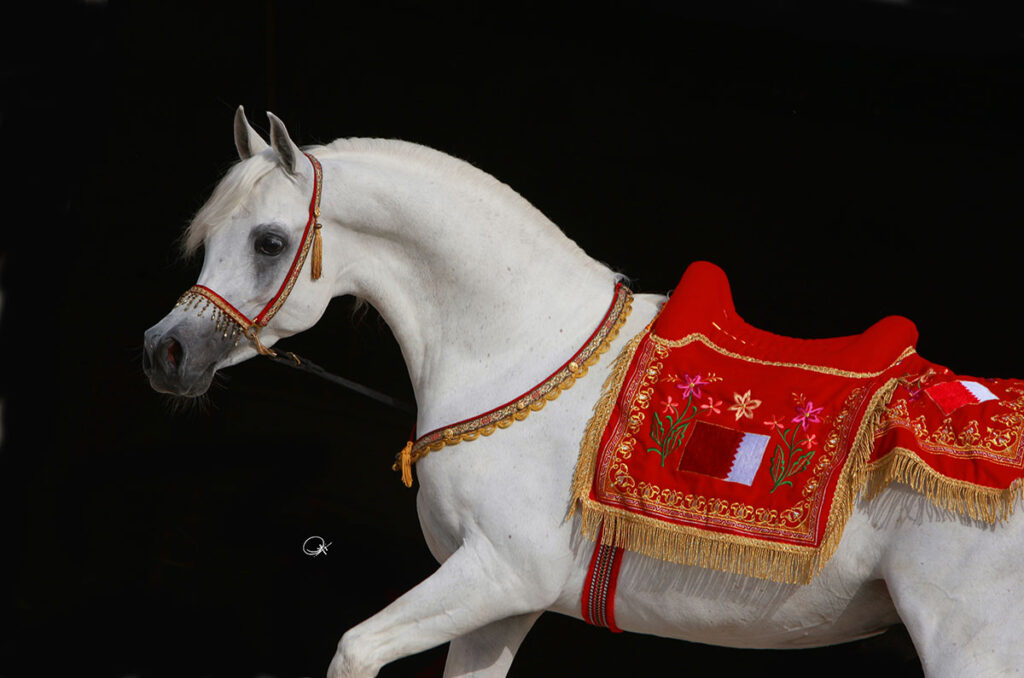
Sinan Al Rayyan – an outstanding sire owned by Al Waab and incorporated into the Al Shaqab breeding program.
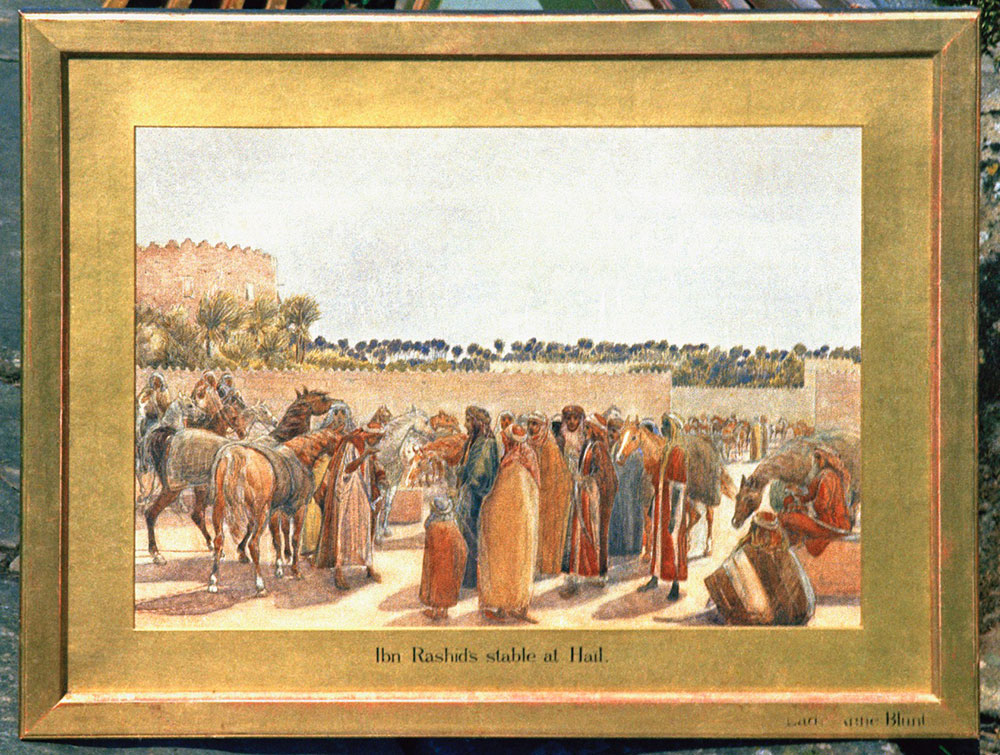
Ibn Rashid’s Stable at Hail, watercolor, c. 1878 by Lady Anne Blunt. Courtesy of Lady Anne Lytton. Photo: Judith Forbis.

Book: The Arabian horses of Qatar by Judith Forbis, Photos by Rik Van Lent Jr.

The first Al Shaqab stables in 1994. Photo: Rik Van Lent Jr.

The new Al Shaqab arena and grounds in Education City after HH The Father Emir gave Al Shaqab to the Qatar Foundation for Education, Science and Community Development. Photo: Andre Shiwa.
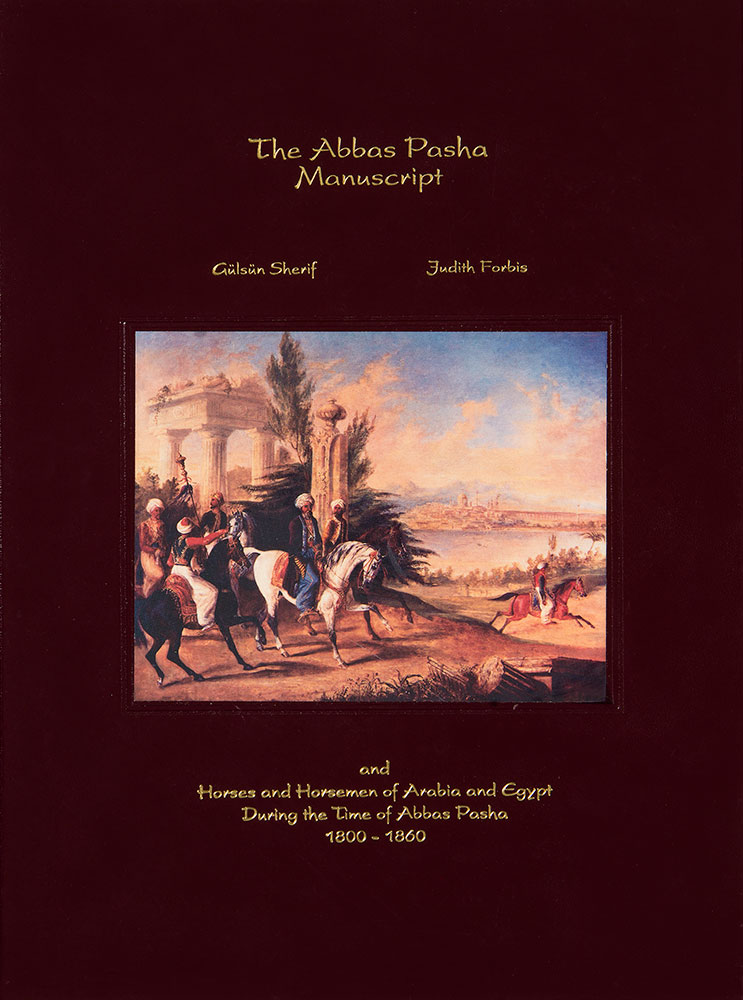
The Abbas Pasha Manuscript, listing the history of the strains of Arabian horses in his famed stables. By Gülsun Sherif and Judith Forbis.
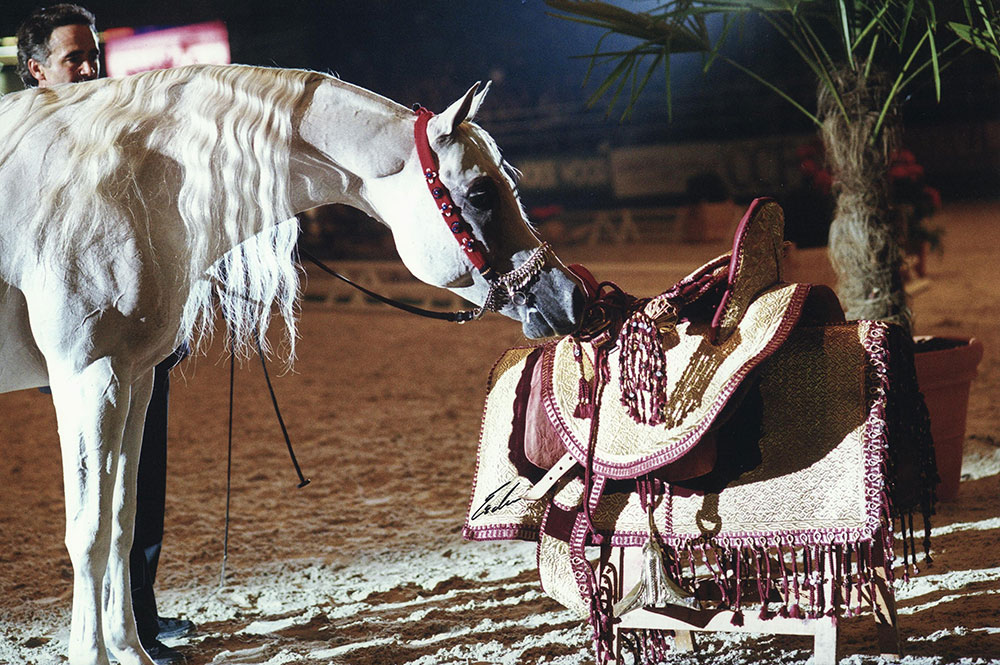
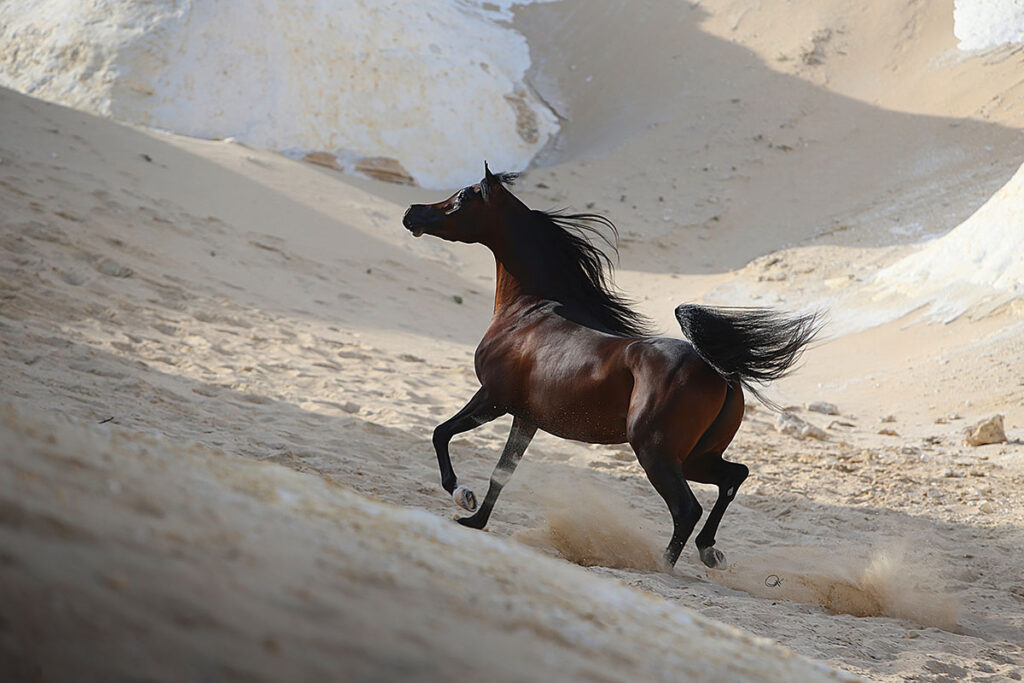
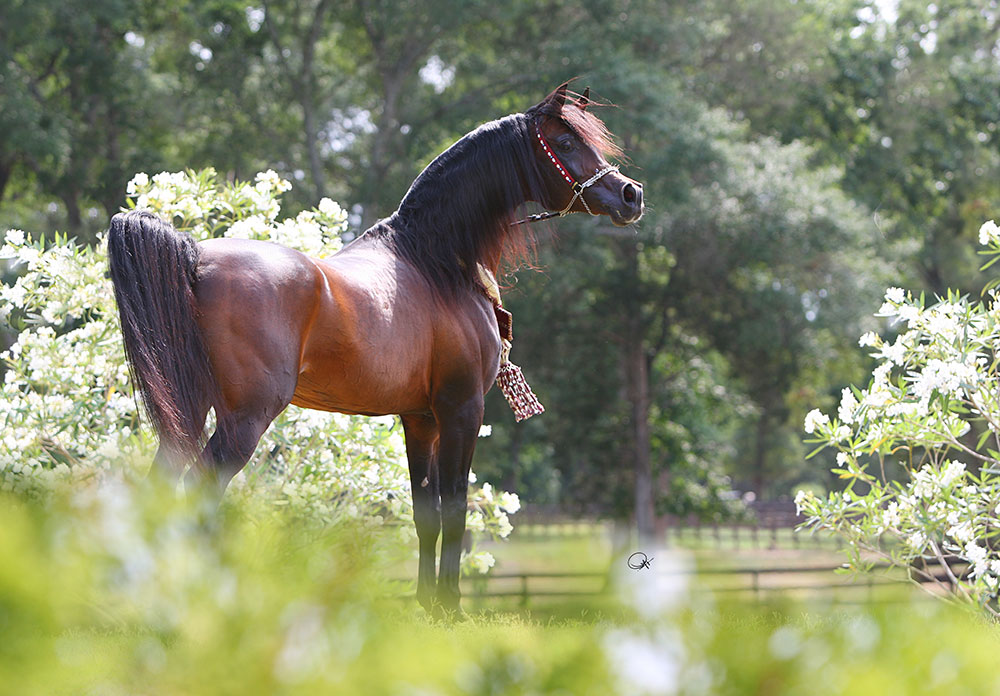
Three prized World Champions and highly valued sires bred by Al Shaqab: Al Adeed Al Shaqab, Gazal Al Shaqab, and Wadee Al Shaqab. Photos by Gigi Grasso; Al Adeed by Erwin Escher.
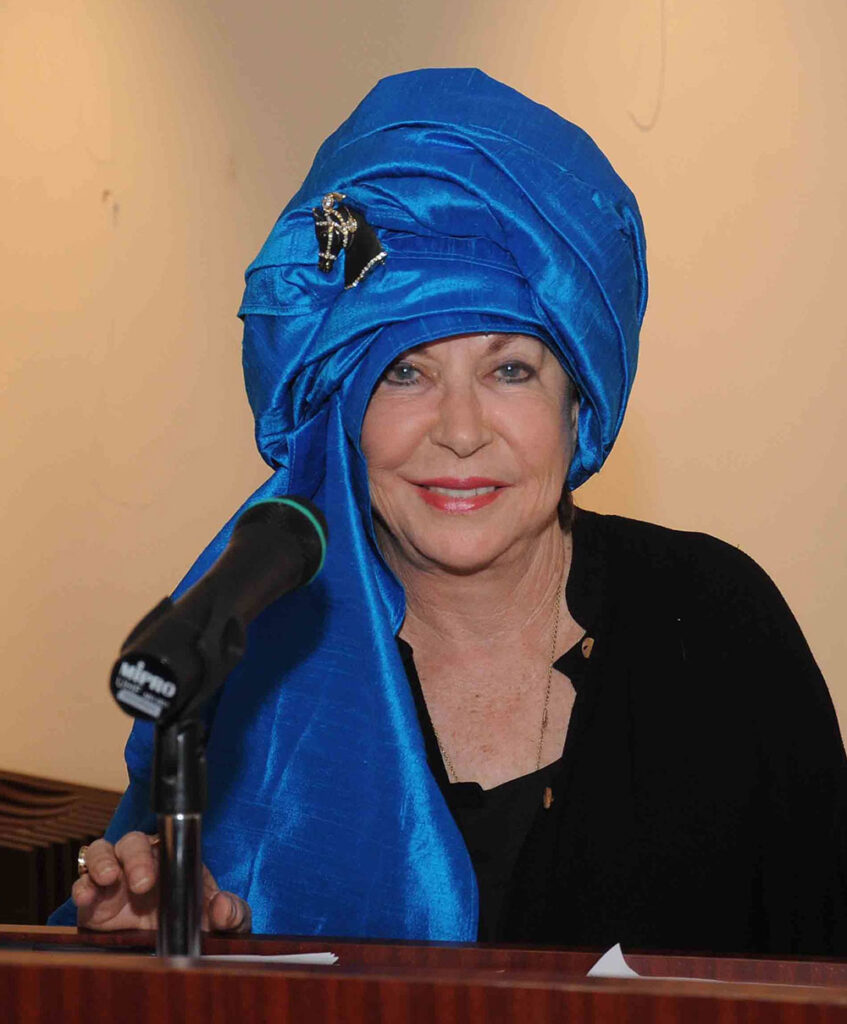
Author – Judith Forbis at one of her lectures in the Arabian Gulf. Photo: K. Media.
Judith Wenning: What inspired you to write this book?
Judith Forbis: It usually takes a particular person or event to inspire and motivate someone to paint a picture, write a book, breed Arabian horses, etc. This book was the idea of HE Sheikha Mayassa bint Hamad bin Khalifa Al Thani, Chair of Qatar Museum and Vice-Chair of Al Shaqab Board of Directors. She wanted to pay tribute to her father, HH The Father Emir Sheikh Hamad bin Khalifa Al Thani, at the time he was Emir of the State of Qatar, for fostering the Renaissance of the Arabian horse in the Arab world and for facilitating the use of Al Shaqab horses in breeding programs around the globe. At that time, I was a consultant to Al Shaqab and was honored that HE Sheikha Mayassa, having seen some of my work, asked me to write this book.
Judith Wenning: Can you please tell us more about it?
Judith Forbis: I’ve known Al Shaqab since it was initially formed by HH The Father Emir Sheikh Hamad bin Khalifa Al Thani in 1992 at the time he was the Heir Apparent to his father HH Sheikh Khalifa bin Hamad Al Thani, Emir of the State of Qatar. During that time, Ansata had sold the beautiful mare Ansata Majesta (by Ansata Halim Shah) to Sheikh Abdulaziz bin Khalid Al Thani of Al Rayyan Farm. This mare caught the eye of HH The Father Emir when she won Junior Champion mare at the first Qatar Arabian horse show in 1993 and inspired him to want more of these bloodlines.
Ansata Halim Shah was at the height of his popularity as a show horse and sire, and knowing of HH The Father Emir Sheikh Hamad bin Khalifa’s interest in these horses, HE Sheikh Abdullah bin Khalid Al Thani, who later established Al Waab Farm, purchased Ansata Halim Shah as a surprise gift to him. A select group of high-class Ansata mares also followed Halim Shah to Al Shaqab. The bloodlines of some of these mares and Ansata Halim Shah are still valued in the stud’s breeding program.
It was in the early 1990s, shortly after the establishment of Al Shaqab, when I first met HH The Father Emir Sheikh Hamad bin Khalifa at the newly constructed Al Shaqab stables in the Al Rayyan district. He had come on his daily visit to see his horses along with a few of his friends. Tall, handsome, with a certain charm and grace, he was very friendly and immediately put me at ease then and whenever we met on various occasions after that. On that first occasion of meeting him, he was still the Heir Apparent to his father the Emir, HH Sheikh Khalifa, an amazing horseman who rode his favorite Arabian stallion, a chestnut named Maayer, to his office daily. Although he was not well, I was fortunate to be granted a rare interview with HH Sheikh Khalifa at his home overlooking the vivid blue waters of the Arabian Gulf (this visit is also described in the book). Obviously, he greatly loved horses, and the interview stretched beyond what I expected to be the allotted time.
HH The Father Emir Sheikh Hamad bin Khalifa Al Thani (r. 1995-2013) – (as he is now referred to since his son, HH Sheikh Tamim bin Hamad Al Thani, succeeded him as Emir of the State of Qatar) – is a fine horseman, loves history, and formed Al Shaqab in 1992 to preserve the Arabian horse culture of his ancestors. In a few short years, he inspired many Arab countries to follow his example. Having purchased some of the top Arabian bloodstock from superior breeders worldwide, he took a giant step and began showing these new acquisitions in America, Europe, and Qatar during the mid-1990s and into the new millennium. Immediately, they started winning! Having been inspired to do likewise, it wasn’t long before Arabian farms began appearing in the Arab world – especially in the Gulf Coast and Saudi Arabia – honoring their cultural heritage just as HH The Father Emir had hoped for. The Renaissance of the Arabian horse in the Arab countries was on its way, and in an amazingly short time, the influence of superstar horses bred in Qatar could be felt throughout planet Earth!
Judith Wenning: What audience did you write for?
Judith Forbis: This is a book that any Arabian horse lover – or any horse lover, for that matter – should find interesting, educational, and inspirational. The Arab poet Al Jahiz (c. 776-868/69) once wrote that a book “is a visitor whose visits may be rare or frequent, or so continual that it follows you like your shadow and becomes a part of you.” I hope each reader will welcome this book as a visitor who teaches you about this amazing country, entertains you with poems and tales of heroes and horses, inspires you with artistic images, and touches your heart with the spirit, mystique, and beauty of the Arabian horses bred or used by Al Shaqab.
Judith Wenning: What are the main themes of the book?
Judith Forbis: The book is divided into three sections: the heritage of this remarkable horse breed and those who bred it; the legend of an amazing stud farm—Al Shaqab—and the world champions it has bred that have influenced the entire world today; and the legacy this farm presents to the Arabian horse world and to the world of horses in general, which lives on into the future.
Each chapter is lavishly illustrated with paintings, historical images, and exceptional photographs by photographers such as Rik Van Lent, Jr., Gigi Grasso, and the late photographers Erwin Escher and Irina Filsinger. The variety of images throughout the book confirms the type and beauty of Arabian horses that inspired great artists of the past and present.
Judith Wenning: What was your purpose when writing this book?
Judith Forbis: The purpose of the book, in addition to paying tribute to HH The Father Emir, is to provide a history of the Al Thani family as horse breeders for centuries, not just as newcomers on the scene. Until this book was written, the Arabian horse world had little if any idea about the historical background of the Al Thani’s: that they were superior horsemen as well as breeders at the time of Abbas Pasha, the Al Sauds and Al Rashids, and tracing far back to the powerful Beni Tamim tribe before the time of the Prophet Mohammed (Pbuh.) In addition to the book honoring HH The Father Emir’s vision, it pays tribute to all the Al Thani’s and how their well-bred and courageous Arabian horses played a part in the war for independence of the State of Qatar.
Judith Wenning: What can readers learn from this book?
Judith Forbis: In addition to the fascinating history of the Al Thani heroes and their horses, this book further confirms that the companionship of Arabian horse and man is deeply rooted in the ancestors of the Arabian people. Although the Arabian horse was replaced by motorized vehicles and other means of travel, it has once again become a cultural treasure of the Arabs.
The development of Al Shaqab, the stud’s use of different Arabian bloodlines, and how they were successful and did (or did not carry on) will be particularly interesting to breeders worldwide. Hopefully, the book will also inspire newcomers to want to own an Arabian horse, especially to learn about the history and standards of the breed before trying to breed it.
Judith Wenning: When did you start to work on this book? How long did it take to write it?
Judith Forbis: My first research into the horses of the Al Thani’s began sometime after 2000 when Qatar sent a delegation of their breeders with Qatari horses in 2002 to compete at the Nation’s Cup (which they won) and the Salon Du Cheval World Championships (which they also won). I was commissioned to write a small book – The Arabian Horses of Qatar – about these breeders and their horses in collaboration with Rik Van Lent Jr., who provided the photographs. These books were given away as gifts at the show and to visitors at the farms. Then, in 2006, I became a consultant to Al Shaqab, and HE Sheikha Mayassa asked me to write a book honoring her father’s contribution to the Arabian horse world through his creation of Al Shaqab and its remarkable global influence on the breed in such a short period of time. Gigi Grasso and Elvis Giughera designed the book, which was ready for print in late 2010. However, due to reorganizations within the Al Shaqab administration and translation delays, it underwent several changes and additions over time until Qatar Museums opted to print it. In 2018, it underwent a complete layout revision and editing to meet QM’s specific criteria. The final review before it went to press was in the summer of 2023. So, one can say it was around 17 years in the making!
Judith Wenning: What did you learn during research or while writing?
Judith Forbis: Patience! More patience! And “Never give up”!
Judith Wenning: What is your personal favorite part of the book?
Judith Forbis: I found the historical section fascinating. The courage and intelligence of Sheikh Jassim bin Mohammed Al Thani—the founder of Qatar’s independence—are the stuff movies are made of—that truth is greater than fiction—including the stories of his successors, the future Emirs of Qatar.
Judith Wenning: What surprised you most during the research or writing?
Judith Forbis: The fact that the first Dahma Shahwania mare listed in The Abbas Pasha Manuscript – who wended her way to the stud of Egypt’s famed breeder Abbas Pasha – was from Qatar. Abbas Pasha is known even today as the greatest collector and breeder of Arabian horses. Therefore, it is interesting to note that the Dahman Shahwan strain was listed first among all the strains in this Manuscript and was favored by Sheikh Jassim bin Mohammed Al Thani, a skilled horseman and warrior.
Judith Wenning: Who would you recommend this book to?
Judith Forbis: Anyone of any age who loves a good story about people and their horses.
Judith Wenning: Did you have any challenges writing this book? And if so, how did you overcome them?
Judith Forbis: Initially, it was difficult because many of the old sheikhs were no longer alive to discuss the Al Thani history, and that information was critical to the initial part of the book. This was overcome through time and the opportunity to corroborate the relationships between Sheikh Jassim bin Mohammad and Mohammad Ibn Rashid by discussing them with Sheikh Jassim bin Thani bin Jassim Al Thani, who was then well over 90 years old. Most challenges – and there were many, including running back and forth from Doha, Qatar to Ansata in Mena, Arkansas – were overcome by patience and convincing those skeptics I interviewed that my purpose was for the world to understand Qatar’s contribution to Arabian horse history.
Judith Wenning: What do you hope readers will take away from the book?
Judith Forbis: This quote says it all: “World champions do not just happen. Like treasured pearls, developed layer upon layer by the patient oyster, great horses are created over time from the stock produced by generations of breeders. Sometimes, however, extraordinary circumstances arise that allow these royal gems to come to light when otherwise they might never have surfaced…”.
Judith Wenning: What does your writing process look like?
Judith Forbis: I try to write simple descriptive prose, knowing that many of my readers in foreign countries do not read English well. I also firmly believe what famed author JP Marquand wrote: “You have to write about what you’ve lived to get at some worthwhile truth.”
Judith Wenning: What is the best part about being an author?
Judith Forbis: You meet people from all walks of life – from Bedouins in tents to Kings and Presidents in palaces to celebrities of stage and screen – that one would never have met were it not for some relationship to Arabian horses. It also has provided unique global travel opportunities – interviewing, lecturing, and learning to appreciate and understand different cultures, people, their horses, and animals.
Judith Wenning: What projects can we expect from you in the future?
Judith Forbis: I keep saying I won’t write any more books, but there is an old saying, “Never say never,” so at this point, I’m not sure. I am considering writing my memoirs and hope I live long enough to do so. However, the many requests I have to contribute in various other ways to the breed, I continue to do so, knowing others have not had my real-life opportunities or don’t have the time. For me, it remains essential to keep “giving back” to the breed that has been my life.
Regrettably, there is a lack of educational and current inspirational books about the Arabian horse (thank goodness Walter Farley’s “The Black Stallion” is still in print). While there are many biographies about celebrities written by various authors, there are fewer autobiographies because they are time-consuming, memory-consuming, and exhausting to write. If you check any library for comparison, you’ll see what I mean! Whether my memoirs become a reality—and inspirational—we shall have to wait and see!



